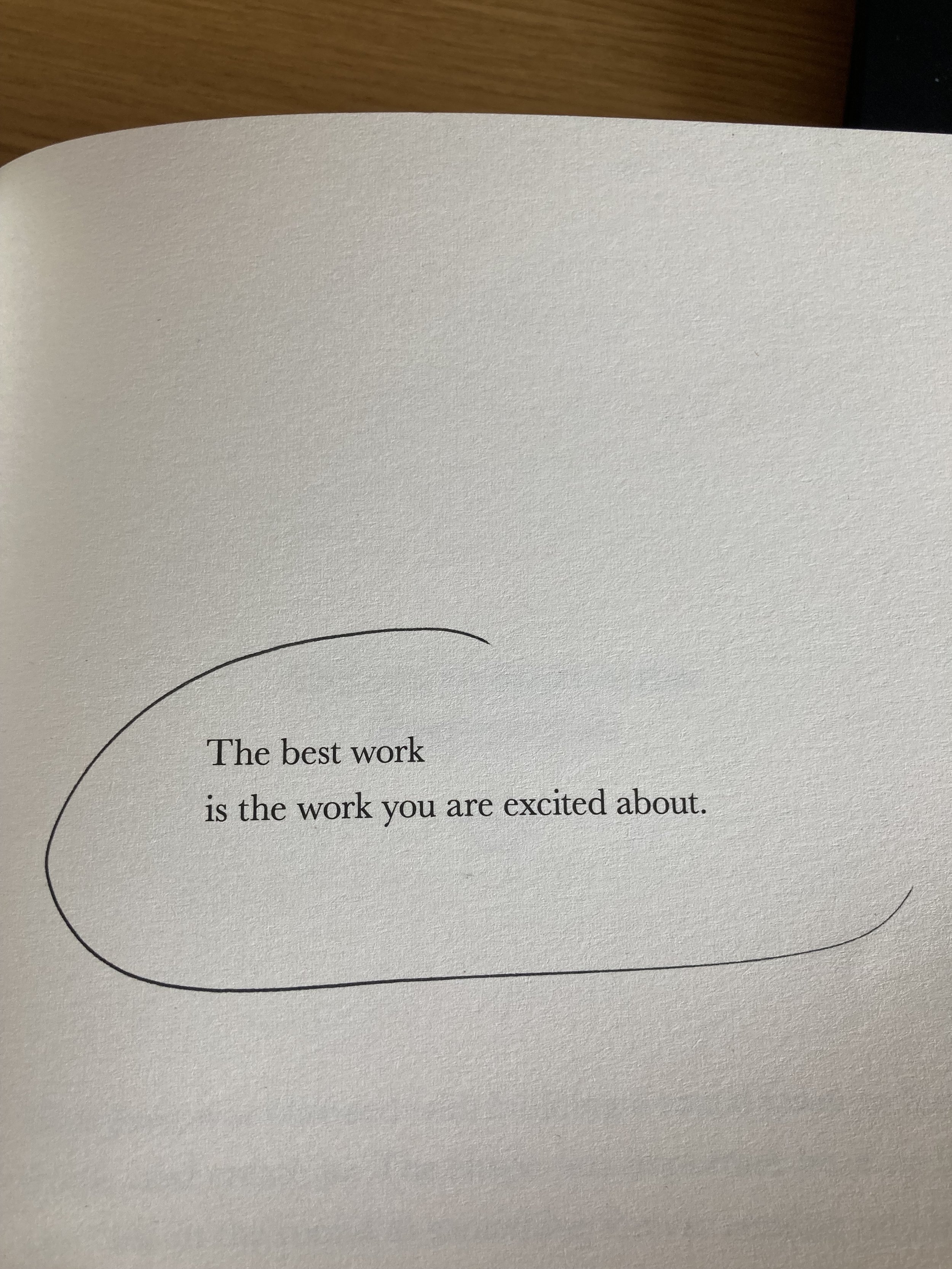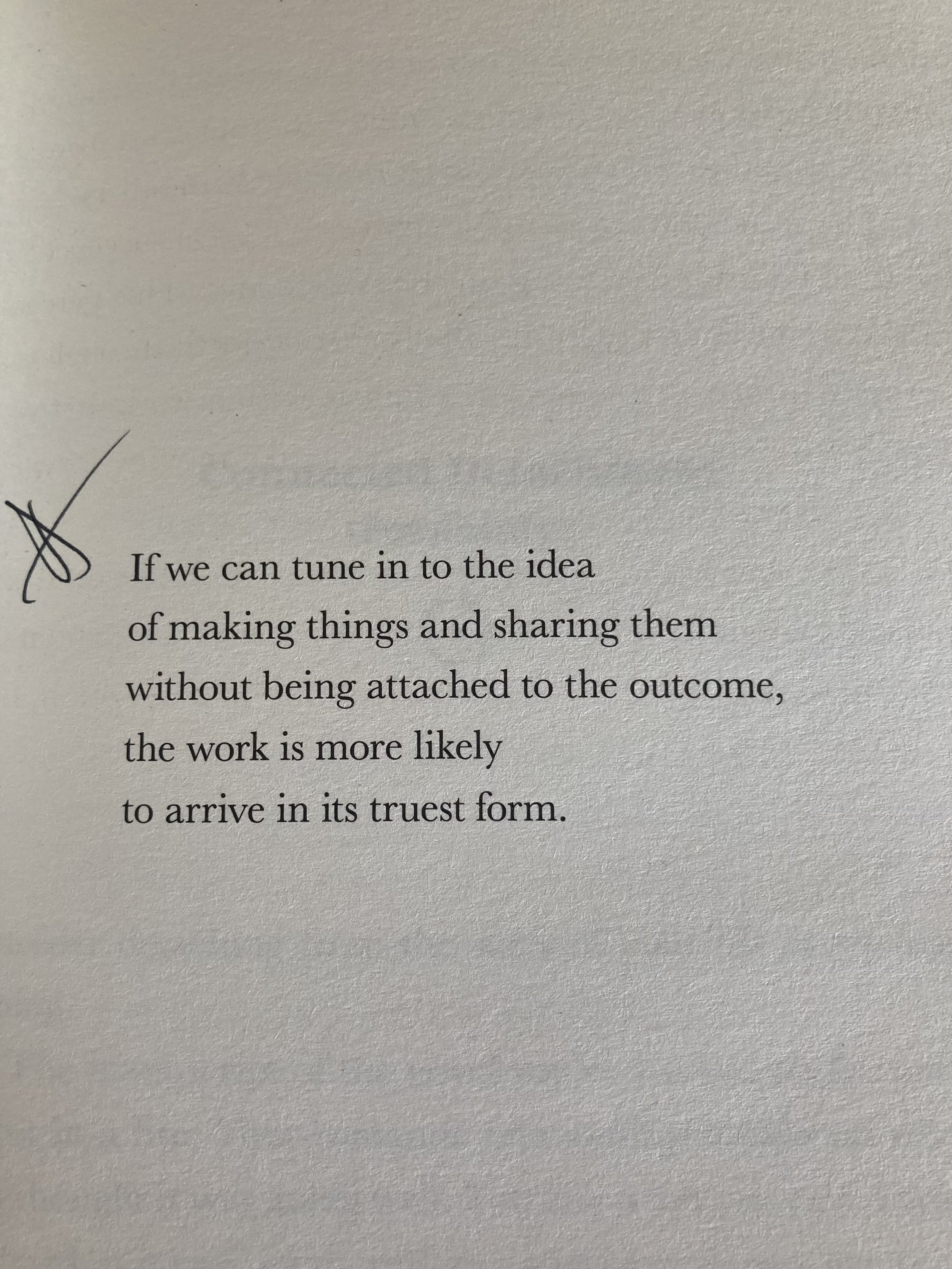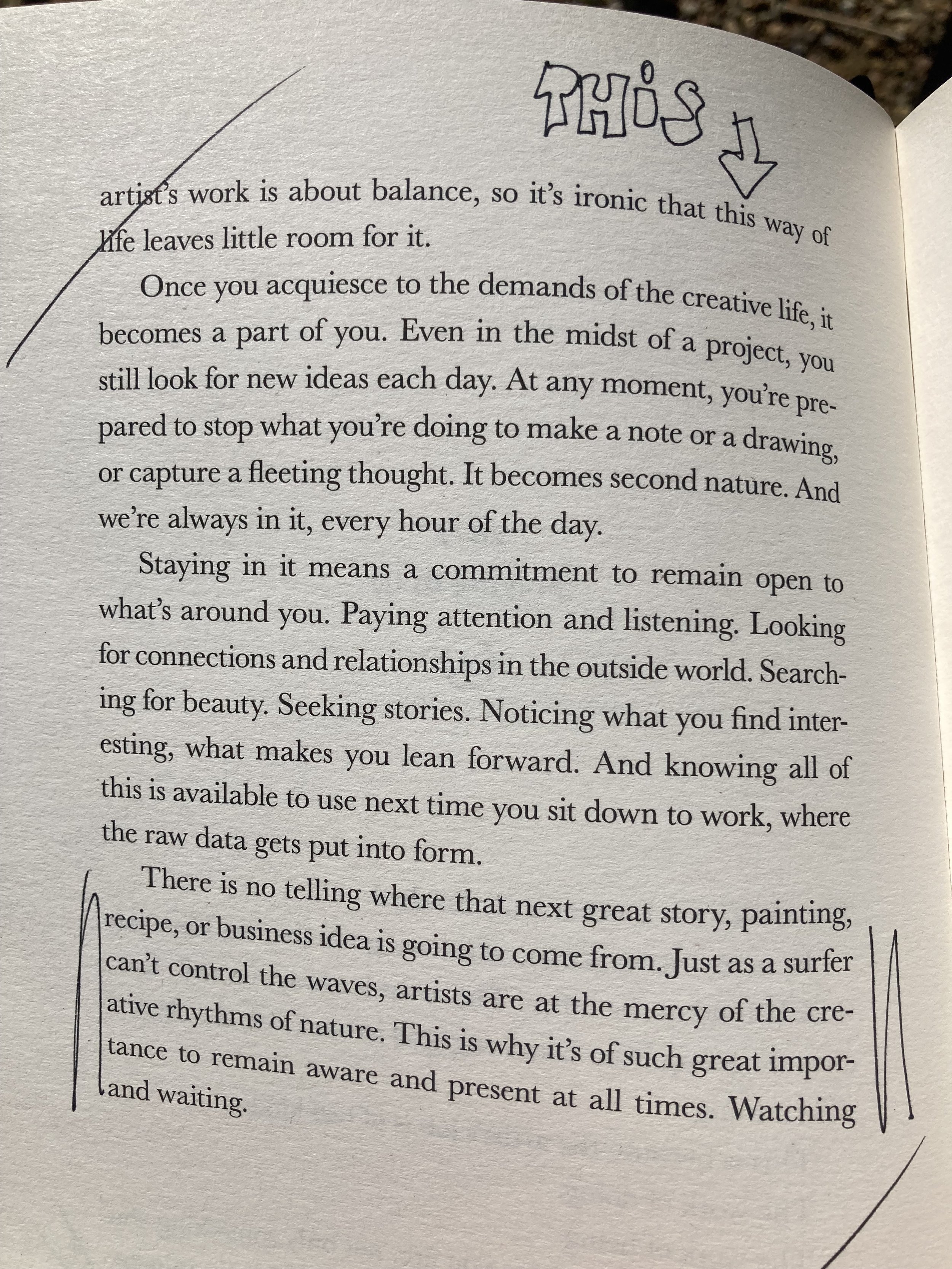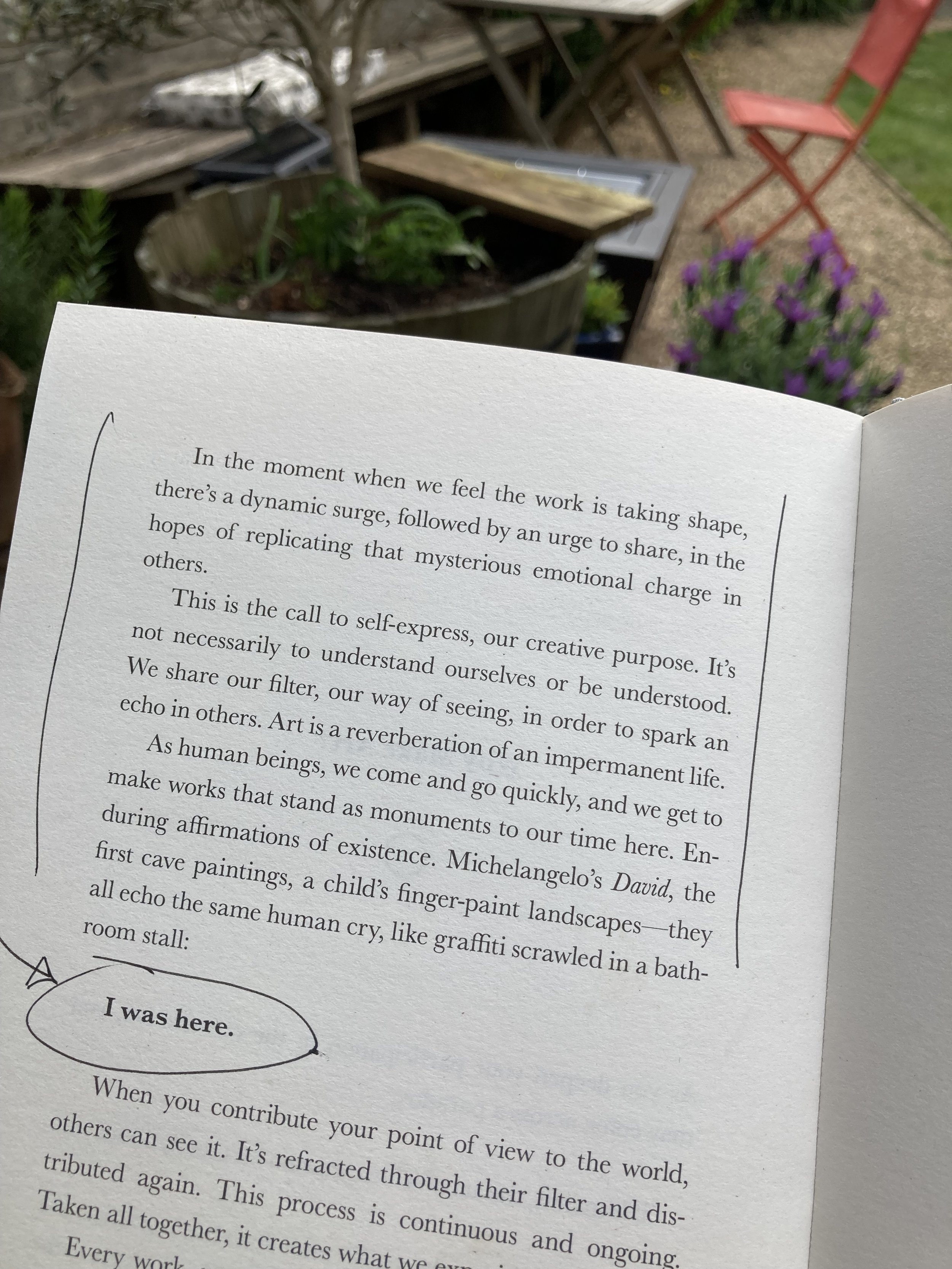Ten lessons on the creative process from Rick Rubin
Well even if the name isn’t familiar, you’ve certainly heard his influence on the creative process as a legendary music producer.
I'm fascinated by Rick Rubin's approach to the creative process. He’s described his role as a 'reducer' rather than a producer, aiming to strip things down to their essence. I’ve just finished reading his book The Creative Act: A Way of Being. In a nod to that, I have reduced the book down to ten of my favourite tips on the creative process:
One: Remember the sun is always there
“I'm strongly affected by the sun. When it's a bright day, I feel energised. When it's gloomy, I'm gloomy. On those overcast days, it helps to tune in to the fact that the sun is still there. It's just hidden behind a thicker layer of clouds. In the same way, regardless of how much we're paying attention, the information we seek is out there. If we're aware, we get to tune in to more of it. If we're less aware, we miss it.”
I found this observation reassuring. That light, clarity and the answers we seek are out there, so long as we pay attention. And I’ll remember the sun is still there on those gloomy days.
Two: Distraction is not procrastination
“When we reach an impasse at any point in the creative process, it can be helpful to step away from the project to create space and allow a solution to appear. We might hold a problem to be solved lightly in the back of our consciousness instead of the front of our mind. This way, we can remain present with it over time while engaging in a simple, unrelated task such as driving, walking, swimming, showering, washing dishes, dancing. These distractions keep one part of the mind busy while freeing the rest to remain open to whatever comes in. This process of nonthinking allows us to access a different part of our brain. One that can see more angles than the direct path. Distraction is not procrastination. Distraction is a strategy in service of the work.”
This one really resonated with me. Away from my deep work - often done in the mornings - the rest of my day typically sees me hop from one thing to another. And I find that when I’m working on a task over here, I come up with an idea for a project over there. Thanks for validating that distractions can be good!
Three: Forget the rules
“Rules direct us to average behaviours. If we're aiming to create works that are exceptional, most rules don't apply. It's a healthy practice to approach our work with as few accepted rules, starting points, and limitations as possible. Often the standards in our chosen medium are so ubiquitous, we take them for granted. They are invisible and unquestioned. This makes it nearly impossible to think outside the standard paradigm. If you want to paint, you're likely to begin by stretching canvas over a rectangular wooden frame and propping it up on an easel. Based solely on the tools selected, you've already exponentially narrowed what's possible, before a single drop of paint has made contact with the canvas. Similar conventions are woven into most art forms: a book is a certain number of pages and is divided into chapters. Embedded in each medium, there are sets of norms that restrain our work before we've even begun.Think beyond what's been done before. The world isn't waiting for more of the same.”
Yes! This opened my eyes to challenging some of those rules in some creative projects I’m working on.
Four: Search for the seeds that can grow into something beautiful
“In the first phase of the creative process, we are to be completely open, collecting anything we find of interest. We can call this the Seed phase. We're searching for potential starting points that can grow into something beautiful. At this stage… we simply gather them. Collecting seeds is best approached with active awareness and boundless curiosity. It cannot be muscled, though perhaps it can be willed. Often the most accurate signposts are emotional, not intellectual. Excitement tends to be the best barometer for selecting which seeds to focus on. When something interesting starts to come together, it arouses delight. It's an energising feeling of wanting more. A feeling of leaning forward. Follow that energy.”
That concept of collecting seeds speaks to my own creative habits of collecting and scrapbooking ideas, unsure at the time of gathering, exactly what they will yield. I love that sense of following the energy!
Five: Adopt an abundant mindset
“A river of material flows through us. When we share our works and our ideas, they are replenished. If we block the flow by holding them all inside, the river cannot run and new ideas are slow to appear. In the abundant mindset, the river never runs dry. Ideas are always coming through. And an artist is free to release them with the faith that more will arrive. The recognition of abundance fills us with hope that our brightest ideas still await us and our greatest work is yet to /come. We are able to live in an energized state of creative momentum, free to make things, let them go make the next thing, and let it go. With each chapter we make, we gain experience, improve at our craft, and inch closer to who we are.”
This echoes what I read in Jeremy Utley’s book ‘Ideaflow’ about increasing the number of ideas we generate; that more input - higher volume - creates better output.
Six: Break the rhythm
“Set parameters that force you out of your comfort zone. If you always write on a laptop, try using a yellow legal pad. If you're right-handed, paint using your left hand. If you base your melodies on instrumentals, write one acapella. If you film using professional equipment, consider making an entire movie with only the camera in your phone. If you always prepare for acting roles through research, try a blind improvisation. Whatever you choose, decide on a framework that breaks your normal rhythm and see where it leads.”
This is a smart counterpoint to the importance of consistency in our creative habits. I am very habity but I know it’s beneficial to shake things up and try new tools and approaches.
Seven: Sometimes the mistakes are what makes a work great
“Humanity breathes in mistakes. When something doesn't go according to plan, we have a choice to either resist it or incorporate it. Instead of shutting the project down or expressing frustration, we might consider what else can be done with the materials at hand. What solutions can be improvised? How can the flow be redirected?”
This made me smile. It reminded me of something that happened late last year, when I realised that my book ‘365 Ways To Have a Good Day’ had been published with a missing chapter. Rather than hide that fact away, I made a point about shouting about it. And it got a really good reaction.
Eight: Creativity is something you are, not only something you do
“Creativity is a way of moving through the world, every minute, every day. Once you acquiesce to the demands of the creative life, it becomes a part of you. Even in the midst of a project, you still look for new ideas each day. At any moment, you're prepared to stop what you're doing to make a note or a drawing, or capture a fleeting thought. It becomes second nature. And we're always in it, every hour of the day. Staying in it means a commitment to remain open to what's around you. Paying attention and listening. Looking for connections and relationships in the outside world. Searching for beauty. Seeking stories. Noticing what you find interesting, what makes you lean forward. And knowing all of this is available to use next time you sit down to work, where the raw data gets put into form. There is no telling where that next great story, painting, recipe, or business idea is going to come from. Just as a surfer can't control the waves, artists are at the mercy of the creative rhythms of nature. This is why it's of such great importance to remain aware and present at all times. Watching and waiting.”
This was my favourite passage in the book. A reminder that we just don’t know where that next idea is coming from. Remain aware and present at all times - yes!
Nine: Reduce it to its essence
“Much of the creative process thus far has been additive. So think of this as the subtractive part of the project. It typically occurs after all the building has been completed and the options exhausted. If you've written a book that's over three hundred pages, try to reduce it to less than a hundred without losing its essence.With the extra layers removed, you may stand back and notice that the work is successful as it is, in its simplest form. Or you may feel that you want to restore certain elements.”
I talk about this in my own book. How when we’re looking to improve something we don’t always think about taking away an element, rather than adding. It speaks to what Rick Rubin has said about being a reducer. I think of that reduction process like the act of making a perfect coffee: extracting an amazing drink, leaving the ground beans behind.
Ten: Heed the call to self express
“The call of the artist is to follow the excitement. In the moment when we feel the work is taking shape, there's a dynamic surge, followed by an urge to share, in the hopes of replicating that mysterious emotional charge in others. This is the call to self-express, our creative purpose. It's not necessarily to understand ourselves or be understood. We share our filter, our way of seeing, in order to spark an echo in others. Art is a reverberation of an impermanent life. As human beings, we come and go quickly, and we get to make works that stand as monuments to our time here. Enduring affirmations of existence. Michelangelo's David, the first cave paintings, a child's finger-paint landscapes they all echo the same human cry, like graffiti scrawled in a bathroom stall: ‘I was here.’ The reason we're alive is to express ourselves in the world. And creating art may be the most effective and beautiful method of doing so. Art goes beyond language, beyond lives. It's a universal way to send messages between each other and through time.”
‘I was here’ - that human cry. Beautifully said.
Thank you Rick for creating this book. These are the ten nuggets that excited me the most.
As Rick says, “Where there's excitement, there's energy. And where there is energy, there is light. The best work is the work you are excited about.”





